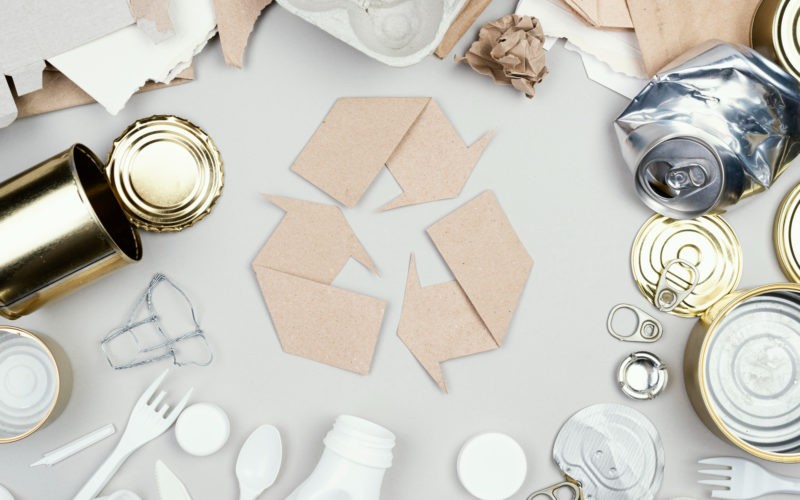Are you starting a business and continually hearing about product destruction, but have no idea what it is or how to do it? Check out this complete guide on how and why to properly destroy your products to protect your brand value.
What is Product Destruction?
Product destruction, also known as product disposal, is the systematic disposing of unwanted, expired, defective, or unsellable products. Although it seems wasteful, this process is essential for many businesses since it prevents their products from being reused, resold, or even ending up in the hands of unauthorized people.
Therefore, it is more than mere disposal. Product destruction is a strategic imperative for businesses, ensuring their compliance with the law and making the company more sustainable and trustworthy.
How Does Product Destruction Benefit Your Business?
There are many reasons why a business should do product destruction, such as:
1. Legal Compliance
Legal compliance is the fundamental reason behind product destruction. All types of industries are subject to stringent regulations governing the disposal of certain products, especially in sectors that deal with potentially harmful or sensitive goods, like electronics, food, pharmaceuticals, beverages, etc. Therefore, adhering to these regulations is both a legal requirement and a certainty that the consumer will be safe and that the product is up to industry standards.
Imagine that a pharmaceutical company has thousands of expired medications. Should these be sold? They clearly can be a risk to the consumer. So, what the company will do is responsibly destroy the medication so it doesn’t pose a risk to anyone. The same thing happens with faulty electronic devices, contaminated food products, and more.
2. Environmental Responsibility
Environmental awareness is essential to any and every company nowadays, and for a good reason: we all need to understand the impact we have on the world and why we need to be sustainable, especially when disposing of goods. Product destruction methods should prioritize waste-to-energy processes, recycling, or other environmentally friendly approaches so the company contributes to a circular economy and reduces the overall ecological footprint.
Adopting responsible and eco-conscious product destruction practices not only meets consumer expectations but also positions the company as environmentally conscious and ethical, raising its market value.
3. Risk Mitigation
One of the reasons why a business must do product destruction is to mitigate risks and protect itself so it can’t be associated with a defective or unsafe product. In case a product like that gets to the market, the company can suffer several consequences, including legal actions, costly recalls, and damage to the company’s reputation.
Product recalls are one of the most feared actions a company can take because they can be financially burdensome and tarnish a brand’s image. There are several examples of food companies that had to recall a product since it was affecting people’s health. Then no one wanted to buy products from that company anymore because they feared getting sick, even though the other products were safe and only the recalled one was problematic. Therefore, it’s better to destroy a faulty product before it is released than to deal with the problem afterward.
4. Brand Protection
Ultimately, it all comes down to brand protection. If the consumer can’t trust your brand, then it is over for you. However, when a company demonstrates a commitment to quality control through responsible disposal practices, it establishes trust with consumers.
Proactive communication about product destruction, emphasizing the commitment to quality and safety, further enhances brand transparency and loyalty.
5. Inventory Management
It may seem counterintuitive, but product destruction is a pillar of inventory management. If you have products that you can’t sell anymore, you need to destroy them or find a way of dealing with them because keeping them costs a lot. They occupy space, management, and resources that could be going to the products that actually sell.
Efficient inventory management through product destruction helps streamline operations, prevent financial losses associated with holding onto less valuable products, and optimize storage space.
Methods of Product Destruction
Various methods of product destruction exist, and the choice depends on the nature of the products, regulatory requirements, environmental considerations, and the desired level of security. The most common methods are:
1. Shredding
Shredding is usually applied to paper products, plastics, textiles, and certain electronic components. It is very effective for items requiring physical destruction, and it can be combined with other methods, such as recycling.
2. Incineration
The products that are usually incinerated include non-recyclable materials, pharmaceuticals, and certain chemicals. This method is great for eliminating a product that can be hurtful to humans, animals, and plants. It ensures complete destruction and can be an energy source if waste-to-energy incineration is used.
3. Crushing
Crushing is great for hard materials, such as metals, ceramics, glass, and certain plastics. It can be combined with recycling, making it great for the environment.
4. Pulverization
Although it may seem similar to incineration, pulverization grinds products like plastics, pharmaceuticals, and some chemicals into fine particles. It provides a high level of destruction and facilitates the recycling process of certain materials.
5. Recycling
Recycling is what most companies should aim to do. It is the most environmentally friendly process of product destruction and allows for the recovery of valuable materials. Unfortunately, not all products can be recycled.
6. Waste-to-Energy (WTE)
WTE can be applied to various non-recyclable materials, such as organic waste and certain plastics. The products are incinerated to produce energy that can be used in many ways, including in your own business.
Communication and Transparency
Communicating effectively with your consumers and the public is fundamental. They must know the reasons behind disposal and the methods employed so they – and the stakeholders – can trust your company. Besides that, transparency helps manage any potential fallout from product recalls or legal actions, allowing businesses to address concerns openly and honestly.
Environmental Responsibility
Businesses are under increasing pressure to adopt sustainable practices as environmental consciousness continues to grow, especially when it comes to product destruction. No consumer wants to contribute to a company that contributes to pollution and environmental destruction, and as the weather becomes more extreme, consumers’ patience with companies that don’t help protect the planet wanes.
The public expects businesses to explore partnerships with recycling facilities and waste management companies that prioritize sustainable practices, contributing to both environmental conservation and corporate social responsibility.












